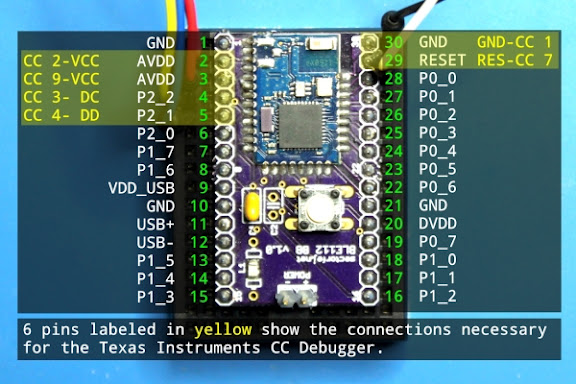The BLE112 module is a great option if you are looking to include the newest Bluetooth 4.0 (Low-Energy) functionality in a embedded system design. The only downside (as you may be able to tell from above) is that the pins are fairly small, and are only suitable to be soldered to a final production design.
To solve this issue, I've ordered the breakout board below:

After soldering the BLE112 module to the breakout board (and the additional SMT components I recently found out are not included) the pins on the breakout should be easy enough to access. The final development set-up should look like the following:

Once broken-out, interfacing will be as simple as referencing this diagram:


We purchased the USB-BLE112 from ezyblue.com and it his adapter works as soon as plugged into the USB port and the driver loaded.
ReplyDeleteAwesome! I'm hoping that once soldered, I get a similar response from the module as well!
DeleteWhat kind of applications are you testing with your own BLE112?